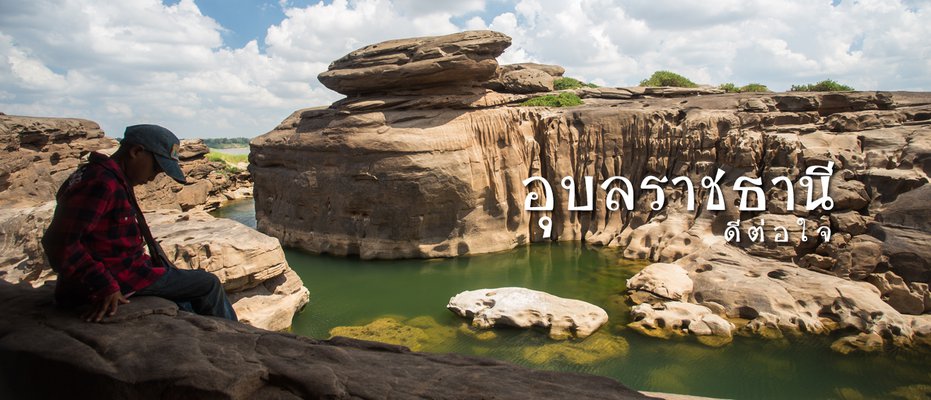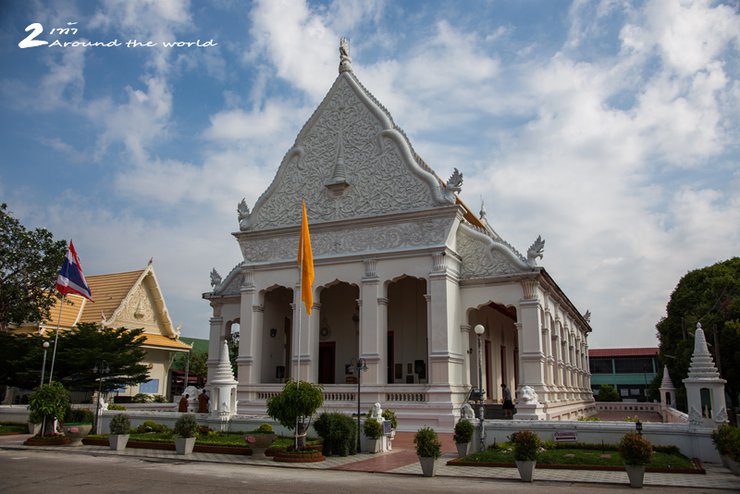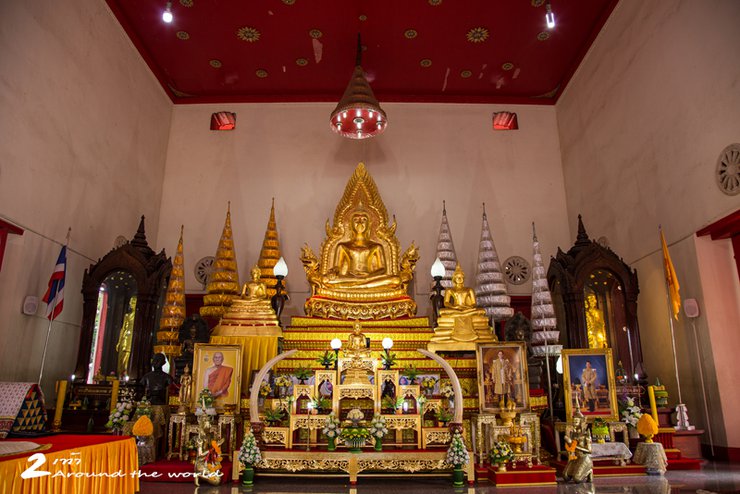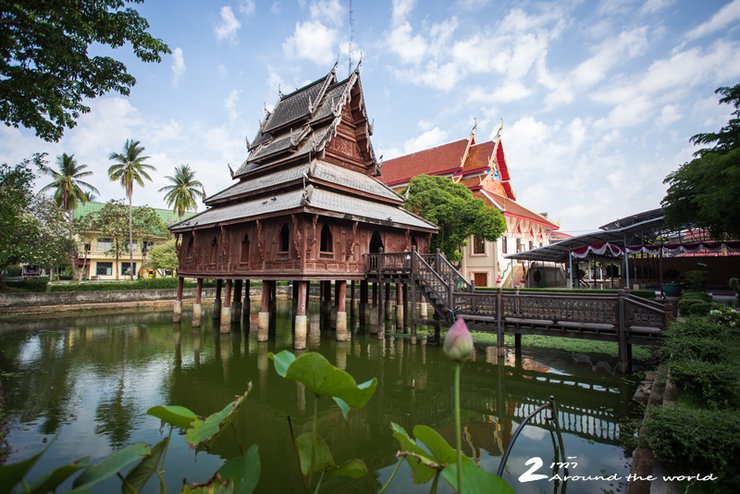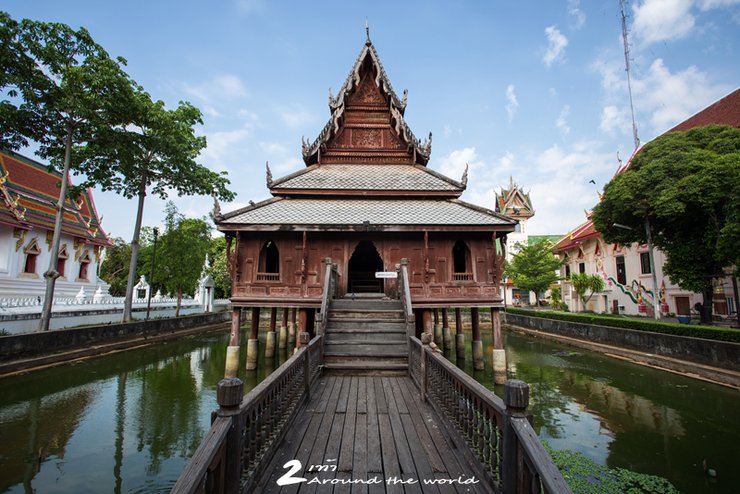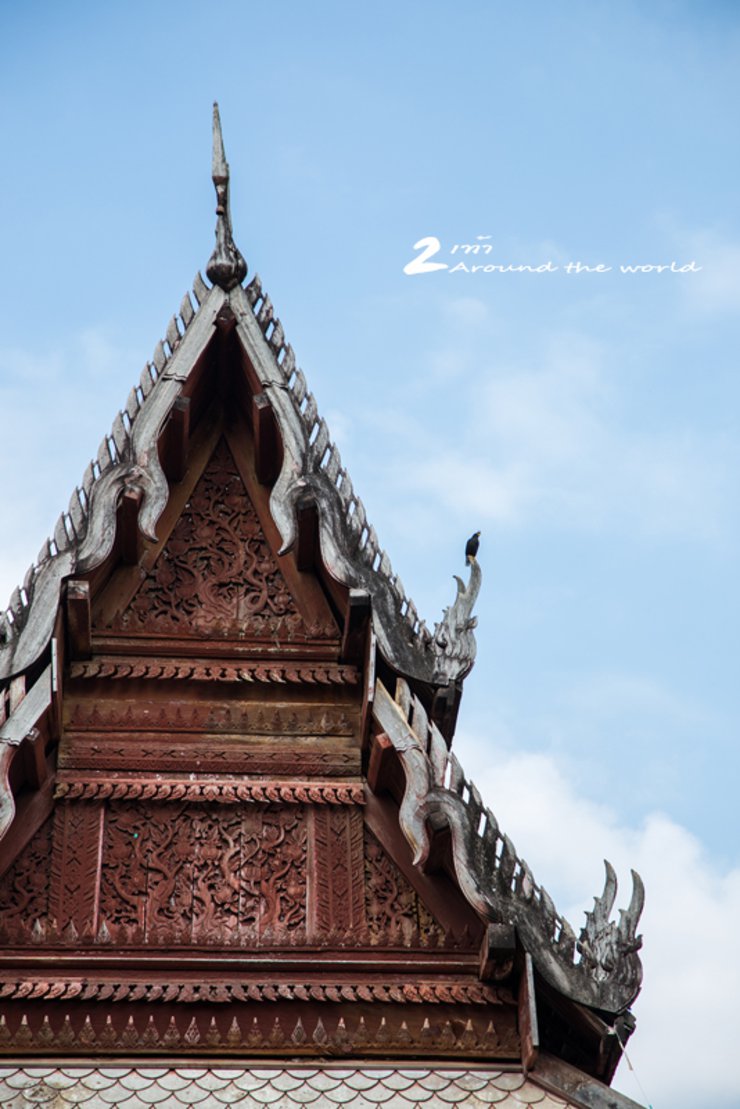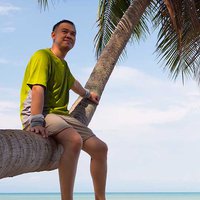
Ubon Ratchathani: A City of Beauty and History
Ubon Ratchathani, a city adorned with beautiful lotus flowers, boasts a unique landscape where two rivers converge, creating a mesmerizing spectacle of contrasting colors. Its waters teem with delicious fish, while its shores are adorned with sandy beaches and rocky rapids.
This land, rich in history and culture, has nurtured generations of scholars and wise men, its people deeply devoted to their faith. The magnificent Pha Taem National Park, with its prehistoric rock paintings, stands as a testament to the region's ancient past.
Ubon Ratchathani is renowned for its vibrant local wisdom and traditions, evident in its numerous historical landmarks and monuments dedicated to the city's most revered figures.
Ubon Ratchathani is another province with a wide variety of tourist attractions, including historical, cultural, and natural sites. Most importantly, each tourist attraction is truly heartwarming.
The journey begins with a visit to Wat Supapatnaram Worawihan, seeking blessings for an auspicious life.

Wat Supapatnaram Worawihan is the first Dhammayuttika Nikaya temple in Ubon Ratchathani. It was built by the royal faith of King Rama IV. The ordination hall of this temple has a unique characteristic because it combines art from three different places. The roof is in Thai style, the middle part is in Western style, and the base is in Khmer style.

The interior of the ubosot houses the principal Buddha image of the temple, known as Phra Sappanya Chao. This Buddha statue is depicted in the Mara-Vijaya posture.
Our next destination is Wat Tung Sri Muang.



The Tung Sri Mueang Temple boasts a stunning wooden Tripitaka library situated in the middle of a pond. This architectural marvel blends Thai, Lao, and Burmese influences, making it one of the most beautiful and well-preserved Tripitaka libraries in the northeastern region of Thailand. Its exceptional beauty has been recognized with the Outstanding Architectural Conservation Award from Her Royal Highness Princess Maha Chakri Sirindhorn.


The writer enters the ordination hall, lamenting the neglect of its once magnificent beauty. Dust, cobwebs, and bird droppings litter the interior. The writer believes that if the temple were to clean and maintain this space, the ordination hall could endure for many years to come.
From Wat Thung Si Mueang, continue to Wat Mahawanaram.



The Mahawanaram Temple, originally known as "Wat Pa Yai", is an ancient temple and considered a landmark of Ubon Ratchathani. Inside the viharn is the enshrined Phra Inpaeng or Phra Chao Yai Inpaeng, a Buddha statue in the Mara-Vijaya attitude, in Laotian art style. Every year in April, there is a merit-making ceremony, offering food to monks, reciting the Mahachat Jataka story, and bathing and gilding Phra Chao Yai Inpaeng. This has been a tradition to this day. I happened to be there during the ceremony, so I was able to participate in this tradition as well. It was truly a great opportunity.
From Wat Mahawanaram, we will continue to Wat Sara Prasan Suk.

The first structure that catches the eye upon entering the temple grounds is the impressive three-headed Erawan elephant archway. This symbolic gateway, depicting the Hindu god Indra riding the mythical elephant, is believed to bestow blessings and protection upon those who pass beneath it, shielding them from obstacles and misfortunes.



The entrance to the temple is unique, and the ordination hall is equally extraordinary. The ordination hall of Wat Sara Prasan Suk is built in the shape of a Supanniga swan boat adorned with ceramics. On the upper deck of the boat, there are oarsmen rowing. Inside the ordination hall, there is a principal Buddha image and beautiful murals.

Besides the Ubosot of the Supann Hongsa boat, at the back of the temple there is also a pavilion in the middle of the water, the Thammana Nakarach boat, or simply called the pavilion in the middle of the water, which is built in the middle of the water on a Naga statue shaped like a boat. The head is a 5-headed Naga. The entrance to the pavilion in the middle of the water is a walkway at the tail of the Naga. Overall, Wat Sa Prasan Suk is another interesting temple. If anyone likes something strange, I recommend trying it out.
From Wat Sara Prasan Suk, we will continue to Wat Nong Bua.




The most prominent feature of Wat Nong Bua is the "Phra That Si Maha Phothi", a replica of the Mahabodhi Temple in Bodh Gaya. The current stupa was built over the original stupa and houses relics brought from Bangkok and fragments of the Phra That Phanom, considered the supreme teacher of all stupas in the Northeast. While the exterior is magnificent, the interior is even more stunning. The interior of the stupa is resplendent with gold, creating a truly awe-inspiring sight.
Having visited many temples in Ubon Ratchathani city, let's move on to a temple in Sirindhorn district. I have chosen Wat Sirindhorn Wararam Phu Phrao, another must-visit destination when traveling to Ubon Ratchathani.


Sirindhorn Wararam Phu Proa Temple, also known as Wat Rueang Saeng, is a temple located on a high hill, replicating the environment of the Himalayan forest temple. The top of the hill is home to the golden-painted Ubosot, which resembles the Ubosot of Wat Xieng Thong in Luang Prabang, Laos. When I arrived, the golden light from the sun began to shine on the Ubosot, creating a truly magical scene.

The interior of the ordination hall houses the principal Buddha image, originally a Phra Buddha Chinarat statue. However, it was redesigned by removing the halo and ushnisha, and a bodhi tree was carved behind the principal Buddha image. The pillars of the ordination hall are meticulously hand-painted with intricate patterns. Overall, the design is remarkably beautiful.




This large mural depicting the Kalpavriksha tree was designed by Khun Akarat Prinyapunno, who also meticulously installed each mosaic piece himself. The Kalpavriksha was inspired by the Tree of Life in the movie Avatar. The artist's idea and meticulousness in carefully planting this beautiful Kalpavriksha tree behind the ordination hall are truly commendable.

Behind the ordination hall, there is a pavilion where you can relax, enjoy the breeze, and admire the view of the Lao side, including the Dan Chang Mek checkpoint and the reservoir. The scenery is truly refreshing.

This is also a beautiful sunset viewing spot in Ubon Ratchathani.


As the last rays of sunlight disappeared below the horizon, the Bodhi tree began to glow with an ethereal green light, gradually illuminating the surroundings with its otherworldly beauty. This mesmerizing spectacle is the origin of the temple's name, Wat Rueang Saeng, which translates to "Temple of Glowing Light."


The darker it is, the more emerald green the Kalpapruek tree glows. The Kalpapruek tree glows because the owner of the idea used a luminescent substance called phosphor to paint the tree. During the day, the phosphor painted on the Kalpapruek tree absorbs light, and at night it glows. In addition to the glowing Kalpapruek tree, the area around the Ubosot has also been painted with phosphor on the stucco patterns on the floor, making it even more spectacular. I really admire the concept of the designer who created this kind of wonder.
If you still have the energy to drive, I recommend staying overnight at Baan Suan Natthachana in Phothirak district, which is located near the Song Sling Pier, where we will be taking a boat trip tomorrow.


Let's take a look at the atmosphere of Baan Suan Natchakan. This resort belongs to Professor Rueangprateep Khieosat, the pioneer of Sam Phan Bok. This is a small, quiet, and peaceful resort.

This building is a breakfast room. In the morning, there will be rice porridge, bread, tea, and coffee available.




Room Types and Amenities
The resort offers three room types:
- Double Room: Features one 5-foot bed.
- Triple Room (1): Includes one 5-foot bed and one 3.5-foot bed.
- Triple Room (2): Provides three 3.5-foot beds.
Amenities include a TV, refrigerator, towels, bottled water, and free Wi-Fi. However, the Wi-Fi was unavailable during my visit.

This room is designed for three guests and comes equipped with three beds. It's worth noting that the room is exceptionally clean.
Accommodation Rates and Contact Information
The accommodation rate is 300 baht per person, which includes breakfast (rice porridge, bread, tea, and coffee).
For inquiries and reservations, please contact Baan Suan Natthachana at 081-725-4728.
The alarm clock went off at five o'clock in the morning. I didn't want to get out of bed yet, but I had to grit my teeth and wash my face and brush my teeth. This morning's program was to go on a boat trip to see the sunrise at Sam Phan Bok. If I left late, I might miss a good opportunity.
The group assembled at 5:20 AM at the resort, which was only 1 km from the pier. The journey took me approximately 10 minutes, as I was unfamiliar with the route and it was still dark. Therefore, I had to proceed cautiously and feel my way along the path.

I arrived at the Haad Salung pier at 5:30 AM. The sky was already starting to change color. Without further ado, we immediately set sail.

The large passenger boat can accommodate 10 people. The boat rental fee is 1,000 baht per boat.

I was on the edge of my seat the entire journey, worried that the sun would rise and greet me before I reached Sam Phan Bok. From the pier, it took about 10 minutes for the boat to dock at Sam Phan Bok.


As the ship docked, I wasted no time in stepping onto the deck, eager to find a good spot to watch the sunrise. However, it was too late. The sun had already begun to peek over the horizon, greeting the day.
Although I couldn't find the perfect angle for a photo, I witnessed the golden sunlight gently caress the Mekong River before me. It was worth dragging myself out of bed for that sight alone.

This is my third visit to Sam Phan Bok. The first time I came during the rainy season, so I couldn't see any of the sandstone formations. The second time I arrived in the afternoon. This time, however, is special because I get to witness the sunrise, which is the highlight of visiting Sam Phan Bok.
The Three Thousand Bends, also known as Sam Phan Bok, is a natural rock formation located in the Mekong River in Ubon Ratchathani Province, Thailand. It is formed by sandstone rapids that have been eroded by the swirling currents of the Mekong River over thousands of years. The erosion has created a series of large and small pools, some of which are several meters deep. The local name for these pools is "bok," hence the name "Three Thousand Bends." The Three Thousand Bends is a popular tourist destination, known for its scenic beauty and unique rock formations.
Sam Phan Bok is dubbed the Grand Canyon of Siam, located in Ubon Ratchathani province.


The Emerald Pool, a large body of water located on the Three Thousand Bends, resembles a natural swimming pool perched atop a rocky outcrop. The pool was formed by the erosion of the Mekong River, creating over 700 small bends. Over time, the mouths of these small bends expanded into larger ones, eventually connecting to form a large pool. The water in the Emerald Pool has no outlet, ensuring a year-round supply. This makes it a natural breeding ground for freshwater fish. Around July, the water level rises, submerging the Three Thousand Bends and the Emerald Pool. The fish in the pool then return to the Mekong River, completing an annual cycle.

Another charm of Emerald Pool.

From the Emerald Pool, the pier is visible, with soft light painting the Mekong River gold.

Another angle that I think anyone who comes to Sam Phan Bok should look for is the Mickey Mouse wave.

Many believe that the Three Thousand Peaks is the navel of the Mekong River and the palace of the Naga.

The formation of the potholes is a continuous process. When a current of water erodes a hole, the water carries away the sandstone, creating a deeper and wider pothole. This process of erosion has been ongoing for thousands of years, resulting in the large potholes seen today. The smaller potholes are estimated to be around 400-500 years old, while the larger ones are likely to be much older, possibly tens of thousands of years old.

Lowering the camera into the Bok Hole provides a unique and unusual perspective.

The little guide told me that this was the third arch. The current had eroded the rock face, creating a hole. When we reached the arch, the little guide quickly jumped down and lay on the bottom, taking a picture of me from below.

This is an important perspective that should not be overlooked.

Upon closer inspection, one can discern the shape of a dog's head in the rock formation. However, from this angle, it may be challenging to perceive.

This angle resembles the stone archway on Koh Kai in Tarutao National Marine Park.

From Sam Phan Bok, we took a boat to our next destination, the colorful rock field.

From the pier, we had to walk a short distance to reach the colorful rock field. All around, we could see the abundance of water guava trees.

Shiny, colorful stones resembling ceramic fragments were observed scattered over an area exceeding two rai. The observed colors are presumed to be a result of bleaching agents carried by water and deposited on the stones. The colors include red, brown, and yellow.

The highlight is this rock, which, upon closer inspection, resembles a vase.

From the colored stone courtyard, we continued to Swan Beach. The little guides helped to push the boat to the dock. Seeing this, I couldn't help but think back to when I was their age, still asking my parents for money.



The sand you see comes from sandstone rapids eroded by the Mekong River's currents and carried together. It looks just like a beach. In some places, it overlaps to resemble a desert. Due to its unusual landscape, Hong Beach was used as a filming location for the drama "Fah Jarod Sai." It is also a popular spot for watching the sunset.

The inscription on the rock face, if observed closely, reveals white numerals carved into the stone. These numbers, a historical relic from the French colonial era, indicate the water level of the Mekong River, ensuring safe navigation. During the flood season, this area is characterized by numerous submerged rocks, posing a significant hazard to vessels.

The young guide pointed to the fish-scale rock. "Notice the bottom of the rock," he said. "It has a pattern that really looks like fish scales."

The boat sailed steadily until it reached "Pak Bong", a cliff formed by the separation of sandstone plates of the earth's crust, resembling a bottleneck. At Pak Bong, the Mekong River is at its narrowest point, only 56 meters wide. The water here flows very fast.


At the mouth of the cave, you will see Thai and Lao people scooping fish. Fishing here does not use bait, but uses a large swing to scoop up fish swimming along the bank. I spent more than two and a half hours on a boat trip, and I must say it was a very happy two and a half hours.

The bustling atmosphere at the Song Sling Pier
The signboard at the pier clearly displays the available boat sizes for hire: large boats with a capacity of 10 passengers for 1,000 baht, and smaller boats for 5 passengers at 500 baht per boat. This morning's sunrise boat tour is undoubtedly a highlight of Ubon Ratchathani.

Upon returning to the resort feeling famished, we were greeted with a large pot of rice porridge prepared by the staff. I devoured two generous bowls, finding it absolutely delicious. After the meal, we freshened up, packed our belongings, and continued our journey to the next destination.
The next destination is Haad Chom Dao, which is not far from Haad Saleng. There are two entrances to Haad Chom Dao. I chose to enter through the entrance with the large kilometer marker. After turning right and driving for a short while, I reached the end of the road. In this area, there are off-road pickup trucks waiting to take tourists to a point near Haad Chom Dao. There are also small guides waiting to welcome tourists. As for the car rental fee, if I remember correctly, it was 300 baht, but my group gave a tip to the driver, so we gave him 500 baht.
I arrived at Haad Chom Dao Beach around 10:00 AM. I took an off-road vehicle for about 1 kilometer. The vehicle was a pickup truck with a cab that could accommodate four people. The rest of the passengers had to sit in the back of the truck. I recommend bringing plenty of sun protection, such as sunscreen, hats, umbrellas, and arm sleeves. You will definitely need them.
From the parking lot, we had to walk a little further. Our little guide volunteered to lead the way to the highlight.


The landscape features are not dissimilar to those of Sam Phan Bok. The formation of the boke is identical to that of Sam Phan Bok.





The highlight of Haad Chom Dao is the steep cliff face, which is indented and surrounded by a winding river. The water is green, and at times, you can see the reflection of the cliff face, creating a beautiful scene. Our young guide volunteered to jump from the high cliff into the water below, performing several jumps. If you enjoy a challenge, you can try your hand at this spot as well.

To fully enjoy your visit to Haad Chom Dao, it's best to arrive either in the morning or evening. The midday sun, from around 10:00 AM to 4:00 PM, can be scorching. I arrived at 10:00 AM and nearly fainted from the heat. It's highly recommended to hire a local car to take you as close to the beach as possible. This will save your energy for exploring the area. Additionally, consider hiring a young local guide. They can help you discover hidden gems and ensure you don't miss any must-see spots at Sam Phan Bok and Haad Chom Dao. Moreover, it's a great way to support these children who, unlike most kids their age who rely on their parents, are already contributing to their families' income. It's truly admirable.
Ubon Ratchathani actually has many more interesting tourist attractions. There are many more places I want to go but haven't been to yet. There are many more places I've been to but want to go back to. Just wait for the right time and opportunity, I'll probably see you again... Ubon Ratchathani.
Finally, you can support me and follow my work at https://www.facebook.com/unclegreenshirt.
ลุงเสื้อเขียว
Tuesday, October 8, 2024 10:28 AM




